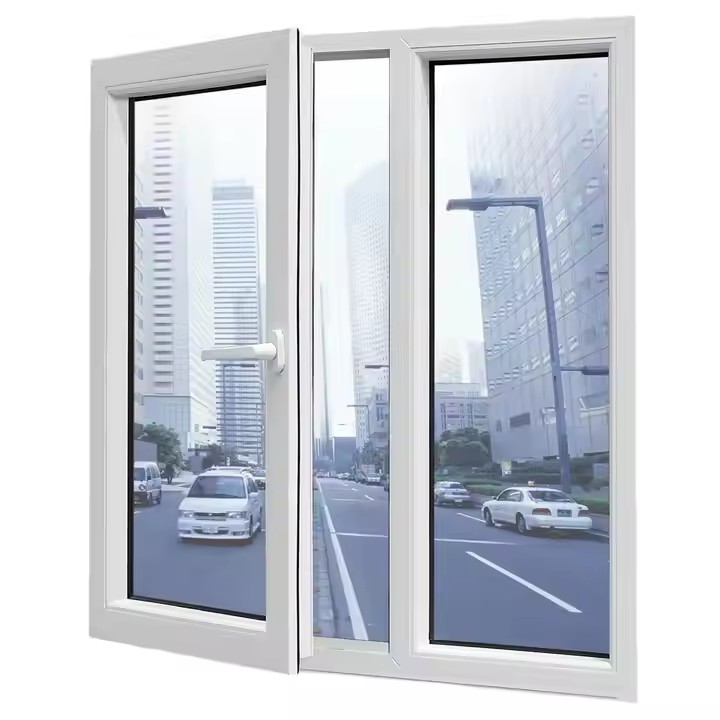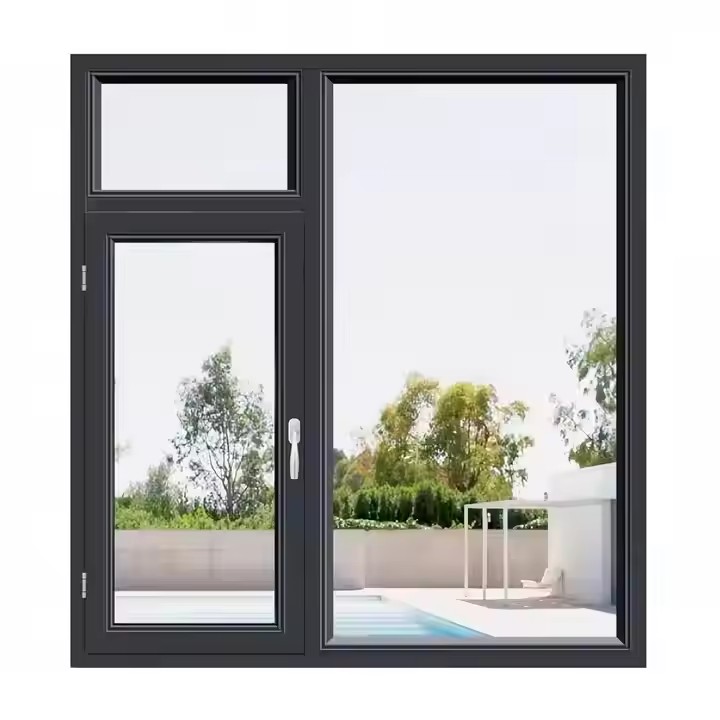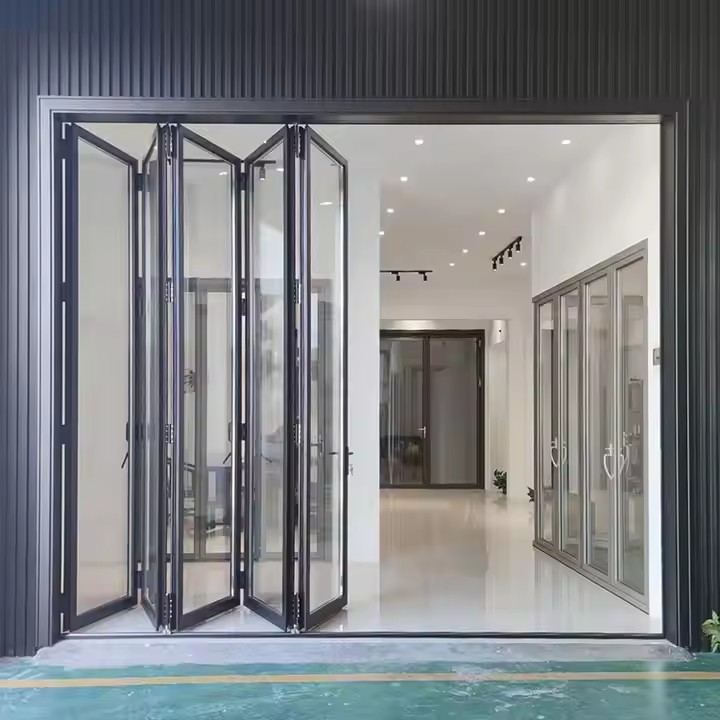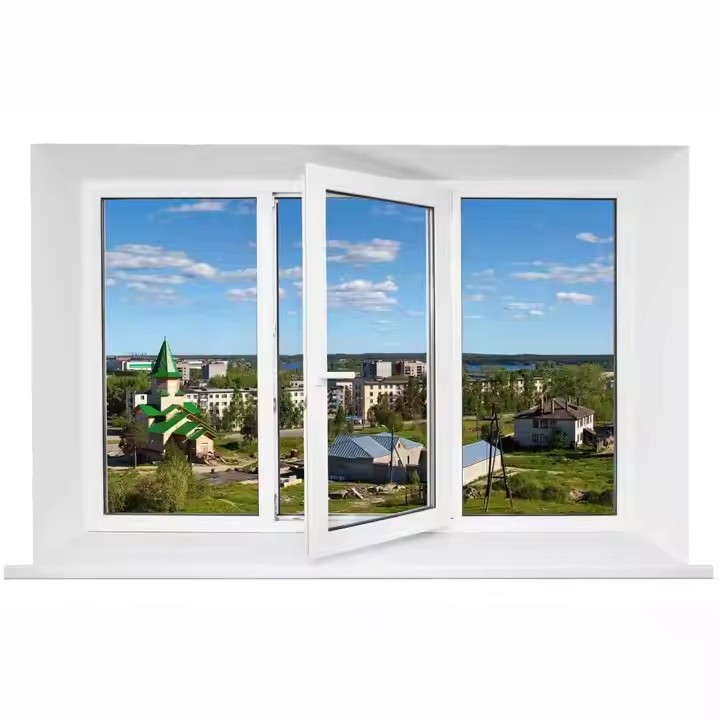Hinges
Materials
Stainless steel: It has excellent corrosion resistance and strength, making it suitable for various environments, especially in humid areas or coastal cities. It can effectively prevent rust and extend the service life. Stainless steel is a high – quality material for manufacturing hardware. Thanks to its stainless nature, it won’t rust even after long – term exposure to wind, sun, rain, ensuring long – term normal use.
Copper alloy: It has relatively high strength and a certain degree of decorative value. With a good appearance and texture, it is often used in occasions where high aesthetic requirements for doors and windows are needed. When using copper alloy, its high strength and wear resistance are very important. Since windows are frequently opened and closed, high – strength hardware materials like copper alloy are durable.
Types
Ordinary hinges: They have a simple structure and relatively low price. Suitable for ordinary household casement windows, they can meet the basic opening and closing functions.

Damping hinges: Equipped with a damping device, they can provide a slow – buffering effect when the window is closing. This avoids collisions caused by rapid closing, reduces noise, and protects the window and the wall. They are suitable for places with high requirements for quietness, such as bedrooms and studies. This type of hinge is usually installed in high – end places because these places require a quiet environment, and damping hinges can effectively ensure this.
Load – bearing capacity
Choose the load – bearing capacity of the hinges according to the size and weight of the casement window. Generally, the larger and heavier the window, the higher the load – bearing capacity of the hinges required. Usually, the load – bearing capacity of hinges ranges from 10 to 30 kilograms. Make sure the selected hinges can easily bear the weight of the window to ensure its stability and service life.
Handles
Materials
Aluminum alloy: It is lightweight, strong, and corrosion – resistant. The surface can undergo various treatments such as anodizing and spraying, with a rich variety of colors. It can be matched with windows of different styles.
Zinc alloy: It has good casting performance and mechanical properties. The surface can be electroplated with various colors, featuring an exquisite appearance and good texture. It is commonly used in mid – to high – end casement windows.
Stainless steel: It has strong corrosion resistance and is sturdy and durable. It is suitable for environments with high requirements for the durability of hardware accessories, such as kitchens and bathrooms.
Styles
European style: The handle has a relatively magnificent and delicate shape, usually with complex lines and decorations. It is suitable for casement windows in European – style buildings, which can enhance the overall aesthetic appeal and grade of the window.
Minimalist style: The design is simple and generous, focusing on functionality and practicality without excessive decorative elements. It matches well with modern minimalist – style windows, giving a clean and neat feeling.
Operation methods
Rotary handle: It is easy to operate. The window can be opened and closed by rotation. It is commonly seen in ordinary casement windows and is widely used.

Lever handle: Operating by holding the handle, it is more ergonomic. The operation provides a comfortable feel, and the force is transmitted more evenly. It is suitable for all types of casement windows, especially large – sized or heavy windows.
Locks
Security
Multi – point lock: When the window is closed, it is fixed to the window frame through multiple lock points, greatly improving the anti – theft performance of the window. It makes the window much harder to pry open and is suitable for places with high security requirements, such as ground – floor residences and commercial buildings.
Anti – theft lock cylinder: Choose a lock cylinder with a high anti – theft level, such as a Class C lock cylinder, which can effectively prevent technical unlocking and enhance the security of the window.
Compatibility
The lock should be compatible with the window handle and the window frame structure. Different types of handles and window frame materials require corresponding locks to ensure firm installation and smooth operation. For example, the installation requirements for locks on aluminum alloy window frames and PVC window frames may vary, so choose the appropriate lock according to the actual situation.
Convenience
Consider whether the lock is easy to operate, such as whether it is easy to unlock and lock, and whether a key is required. Some smart locks can support multiple unlocking methods such as fingerprint, password, and card – swiping, providing more convenience and security for users who pursue a convenient lifestyle.

Stay arms
Materials
Stainless steel: It has good strength and corrosion resistance, maintaining stable performance during long – term use. It is not easy to deform or rust and is a commonly used material for stay arms.
Aluminum alloy: It is lightweight and has relatively high strength. After surface treatment, it has a high aesthetic level. It is more coordinated when paired with aluminum alloy windows and also has a certain degree of corrosion resistance.
Specifications
Length: Select the appropriate length of the stay arm according to the width of the casement window sash. Generally, the length of the stay arm should be slightly more than half of the sash width to ensure stable opening and closing of the window.
Load – bearing capacity: Similar to hinges, the stay arm also needs to be selected according to the weight of the window. Generally, the load – bearing capacity of each pair of stay arms is about 15 – 30 kilograms. Ensure that the stay arm can bear the weight of the window to avoid sagging or jamming.
Opening angle: Different stay arms have different opening angles, commonly 90 degrees, 120 degrees, etc. Select the stay arm with a suitable opening angle according to the actual usage requirements and the installation position of the window. For example, if there are obstacles outside the window, a stay arm with a smaller opening angle may be needed.

